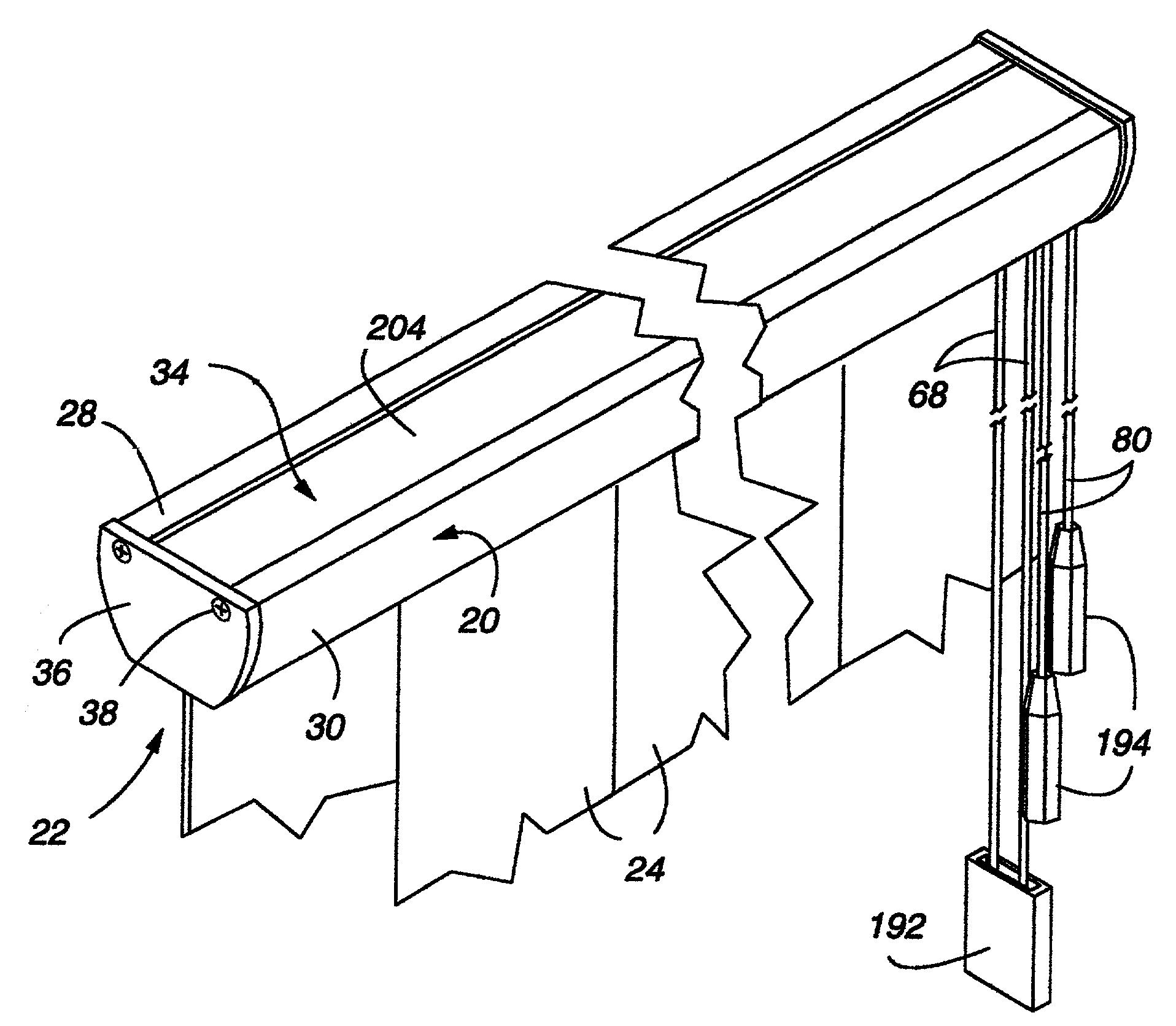Control system for a vertical vane covering for architectural openings
- Summary
- Abstract
- Description
- Claims
- Application Information
AI Technical Summary
Benefits of technology
Problems solved by technology
Method used
Image
Examples
Embodiment Construction
[0102]The headrail 20 and other portions of the control system 22 of the present invention are shown in FIGS. 1 and 2 with vertical covering segments, hereafter referred to as vanes 24 but which might assume other configurations, being suspended from carriers 26 in the system in adjacent side by side relationship. For purposes of clarity, the vanes are shown in dashed lines in FIG. 2. The headrail for the control system is designed to extend completely across the top of an architectural opening (not shown), and be suspended in a manner to be described hereafter from a beam or other supporting structure at the top of the architectural opening. While not being illustrated, the control system 22 is adapted to move the vanes 24 from a retracted position wherein the vanes are horizontally stacked adjacent one side of the architectural opening to an extended position wherein the vanes are evenly distributed across the architectural opening. In the extended position the vanes are adapted t...
PUM
 Login to View More
Login to View More Abstract
Description
Claims
Application Information
 Login to View More
Login to View More - R&D
- Intellectual Property
- Life Sciences
- Materials
- Tech Scout
- Unparalleled Data Quality
- Higher Quality Content
- 60% Fewer Hallucinations
Browse by: Latest US Patents, China's latest patents, Technical Efficacy Thesaurus, Application Domain, Technology Topic, Popular Technical Reports.
© 2025 PatSnap. All rights reserved.Legal|Privacy policy|Modern Slavery Act Transparency Statement|Sitemap|About US| Contact US: help@patsnap.com



